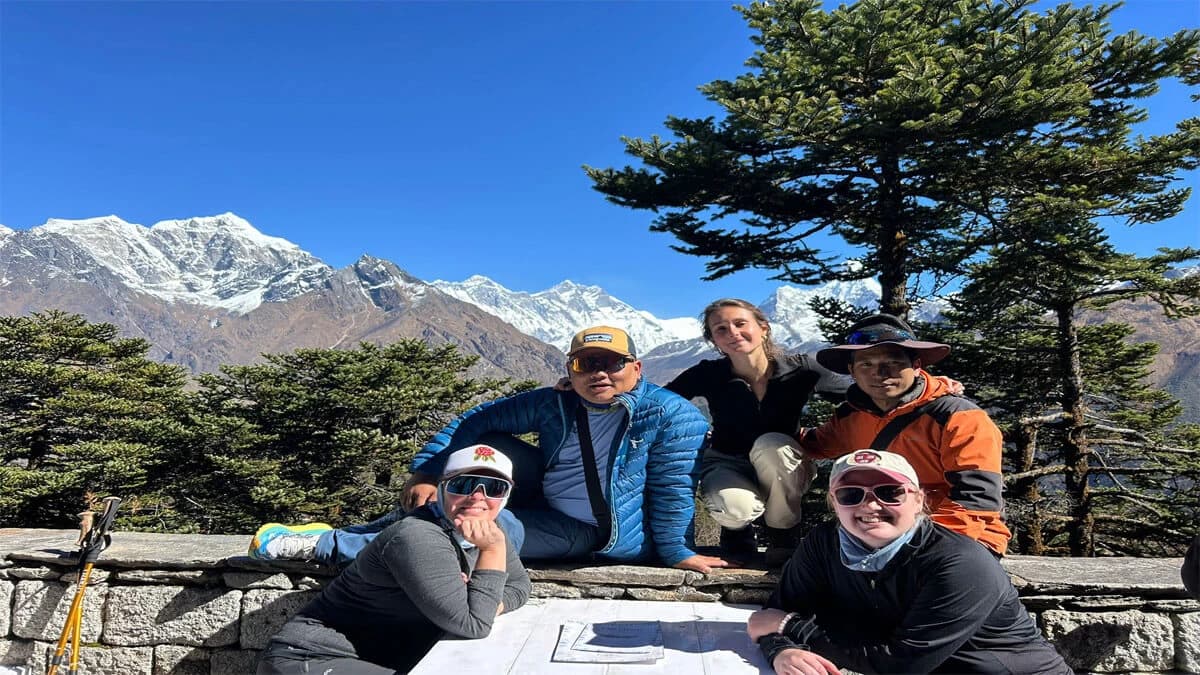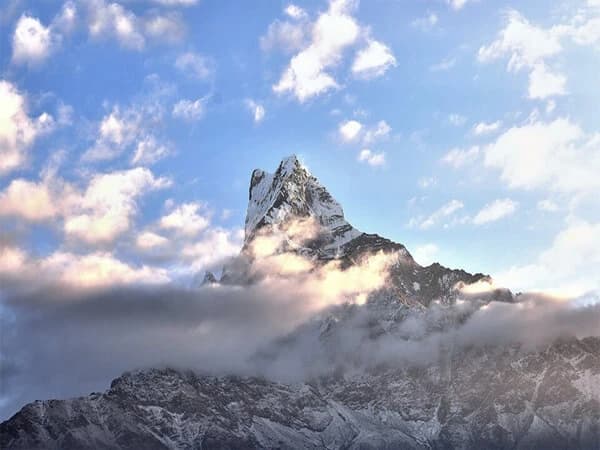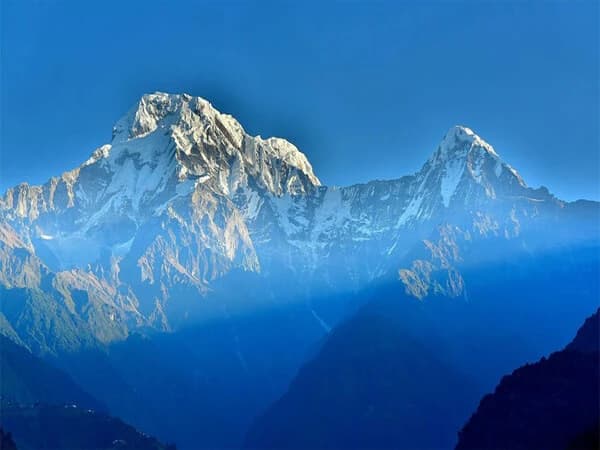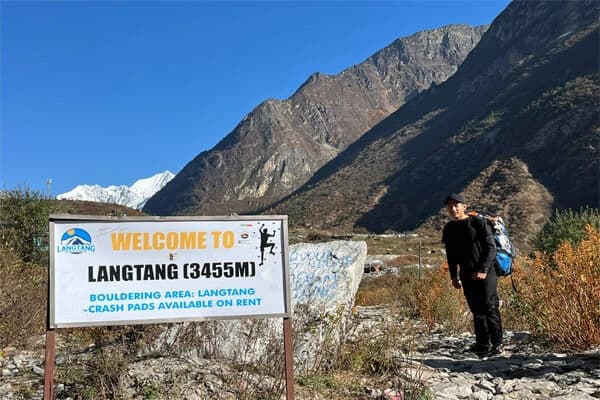Selecting the appropriate agency can make or break your trek planning experience in Nepal. Local trekking experts provide affordable programs that directly benefit mountain villages, customized itineraries, and genuine cultural insights. Although they are frequently more expensive, international agencies offer perceived dependability, pre-trip help, and worldwide standards. The decision is based on your priorities, whether they are convenience and familiarity or an immersive local experience. Both alternatives guarantee safety, permits, and logistical help. Trekkers can make an informed choice by weighing aspects like sustainability, reviews, and transparency.
Booking Your Trek in Nepal – Local Experts or International Agencies?
Organizing a trip for trekking in Nepal is among the most thrilling experiences anyone can have. The journey promises to be both challenging and beautiful, with the breathtaking Himalayas serving as your backdrop and innumerable pathways winding past isolated villages, lush forests, and historic monasteries. However, one of the most crucial choices you will make before putting on your steps is how to schedule your trek. Should you use an international tour operator located in your own country or one of the numerous Nepal trekking agencies? Every choice has benefits of its own, ranging from local knowledge and cultural ties to international service standards and security. By being aware of these variations, you can make sure that your trekking experience is seamless, genuine, and in line with your vacation objectives.
In this blog, we will examine the benefits and drawbacks of booking through local professionals as opposed to foreign agencies. This will help you make an informed decision and confidently plan your Himalayan journey.
Understanding the Trekking Industry in Nepal
Nepal has a right to be known as the world's trekking capital. Thousands of tourists visit the nation each year to take in its stunning mountain scenery, historic paths, and friendly people. However, it is crucial to understand the workings of the trekking industry before you book a trek in Nepal, how trips are planned, who oversees them, and what kinds of organizations are in place behind the scenes. This guarantees a safe, genuine, and unforgettable trekking experience and assists you in making an informed decision.
The Backbone of Nepal’s Trekking Industry

Nepal trekking sector is a special fusion of professionalism and culture. Local guides, porters with years of mountain experience, and authorized Nepal trekking tour operators provide the majority of its support. All treks adhere to safety and ethical standards thanks to the registration of these specialists with the Nepal Tourism Board (NTB) and Trekking Agencies’ Association of Nepal (TAAN).
From permits, lodging, and transportation to qualified guides and safety logistics, local companies are essential to the process. They are the true Himalayan experts, frequently hailing from the areas where treks exist, like Everest, Annapurna, or Langtang. By selecting them, you can support local businesses and have more genuine experiences.
How International and Local Agencies Collaborate
Numerous foreign businesses also provide Nepal trekking packages. For ground operations, even these international operators typically collaborate with regional organizations. To put it another way, a Nepal-based company handles the actual logistics, like as guides, porters, and permits, even though you may book your trek through an international website.
Through this relationship, trekkers can take advantage of the extensive local knowledge of Nepali specialists while receiving pre-departure support and communication at a worldwide level. However, the foreign agency's added administration and marketing costs may result in a higher total cost.
Range of Trekking Packages Available
Starting your Nepal trek booking will reveal a vast array of packages tailored to suit every interest and level of fitness. There is something for everyone, ranging from easy and picturesque treks like the Ghorepani Poon Hill Trek to strenuous experiences like the Everest Base Camp or Manaslu Circuit. Nepal trekking tour operators usually provide a variety of packages, including:
- Standard treks, which include basic accommodation, meals, and guide services.
- Luxury treks, featuring high-end lodges, private transfers, and additional comfort.
- Customized treks, allowing you to adjust routes, pace, and services according to your preferences.
Every plan includes the required permits, lodging, food, local transportation, and knowledgeable guides that guarantee both safety and cultural immersion.
The Growing Emphasis on Responsible Trekking
The trekking sector in Nepal has changed recently to focus on community-based tourism and sustainability. Nowadays, a lot of Nepal trekking tour operators place a strong emphasis on waste management, eco-friendly procedures, and treating porters and guides fairly. You make a direct contribution to rural economies, education, and environmental preservation in the mountainous areas when you bookking a trek in Nepal with an ethical local operator.
A good Nepal trek booking experience depends on your ability to understand these factors. Understanding the system's operation, whether you choose a domestic or foreign agency, enables you to make an informed decision. This advances your adventure objectives and the communities that enable them.
Benefits of Trekking Booking with Local Experts
Selecting a booking partner is one of the most crucial choices when organizing a trek in Nepal. There are other benefits of booking with a local trekking agency in Nepal that go beyond cost, even though foreign organizations could have recognizable branding. Local professionals have a unique understanding of the Himalayas, offering individualized care and genuine experiences.
Deep Local Knowledge and Authentic Experiences
The greatest advantage of booking a local trek in Nepal is extensive knowledge of the native guides about their country. The Himalayas are living landscapes that are rich in local cultures, customs, and stories; they are more than just mountains and trekking routes. Local trekking companies in Nepal hire porters and guides who grew up in these areas. This enables them to exchange personal knowledge about remote villages, local monasteries, and Sherpa culture.
When the weather changes, they are aware of the safest routes, lesser-known side trails, and the best vantage locations. Larger multinational operators find it difficult to match the richer, more intimate connection to Nepal that this authenticity provides.
Flexible and Personalized Service
The flexibility of a Local Nepal tour operator is a key factor in passengers' preference. Local organizations may readily modify schedules to fit your interests, pace, and weather. Local teams can arrange for a cultural tour in Kathmandu or an additional day of acclimatization in Namche Bazaar with ease. They communicate directly with guides through their small, committed teams. Because of this, each expedition feels more like a personalized journey than a predetermined package. Additionally, you can customize unique routes or make last-minute reservations thanks to this flexibility, which eliminates the lengthy response times that are frequently associated with foreign businesses.
Fair Pricing and Community Support
Because local businesses do not have to deal with foreign offices or intermediaries, their prices are more clear and reasonable. As a result, more of your money can go directly toward helping local communities, porters, and guides.
Making a reservation through a local trekking company in Nepal supports households who rely on tourism as their primary source of income, thereby sustaining the mountain economy. A large number of these businesses also fund community initiatives including environmental cleanups, education, and porter welfare programs. Selecting locally not only saves money but also has ethical benefits.
Safety, Support, and Trustworthy Networks
At all times, the best trekking company in Nepal will put your safety first. Local professionals can monitor weather changes, manage altitude sickness, and plan emergency evacuations if needed. They have solid connections with medical services, lodges, and rescue companies in the Annapurna, Langtang, and Khumbu regions.
They respond more quickly and communicate more clearly since they work in their own setting. Your guide's insurance, licensing, and training in accordance with Nepal's tourism standards will also provide you piece of mind.
Sustainable and Eco-Friendly Approach
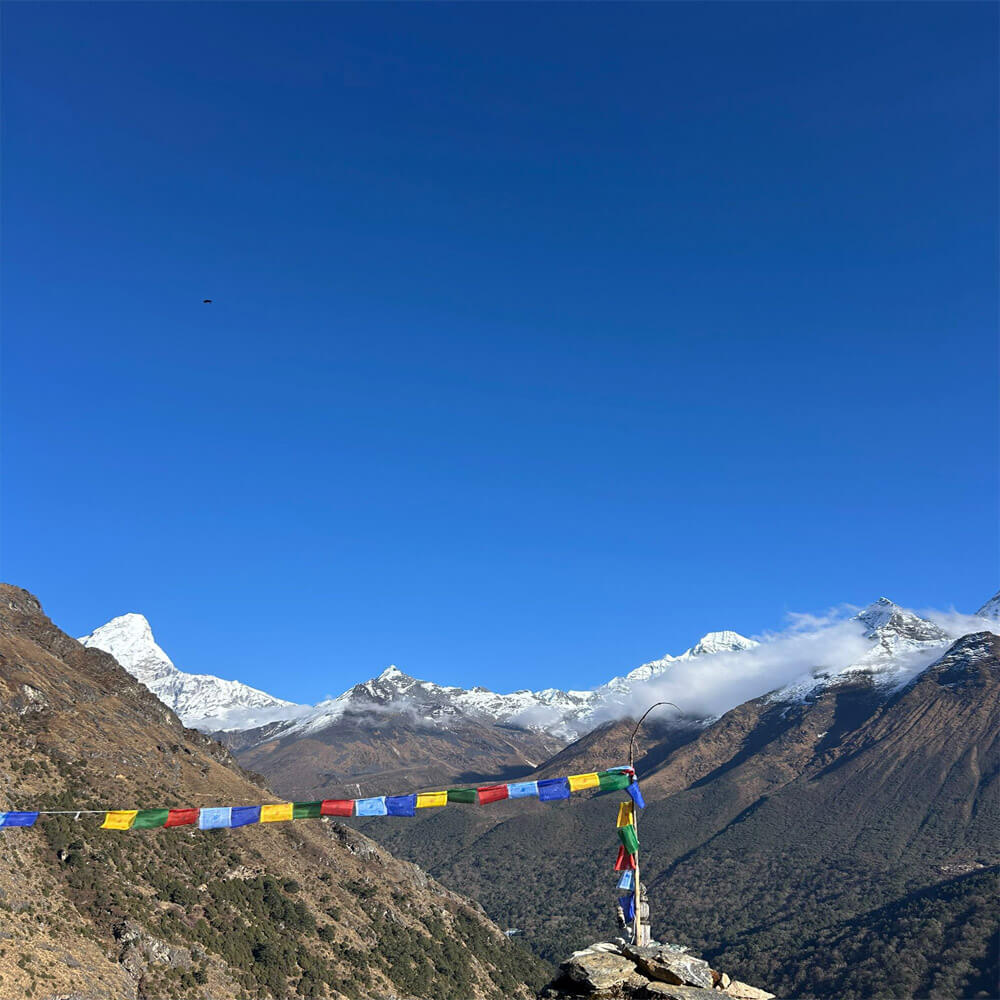
Their dedication to sustainability is perhaps another important benefit of booking with a local trekking agency in Nepal. Many local businesses adhere to eco-friendly procedures, which include minimizing the use of plastic, encouraging appropriate waste disposal, and honoring regional traditions. Their strategy is based on long-term stewardship as opposed to immediate financial gain.
The advantages of trek booking in Nepal with local are essentially much more than just practical. You receive reasonable pricing, flexibility, real cultural connection, and professional advice all while helping the locals who live in these mountains. Traveling with a local Nepal tour operator allows you to experience Nepal from the inside out, not merely explore it.
Benefits of Booking with International Agencies
Many trekkers think about making reservations through international trekking agencies while organizing their Nepal adventure travel because of the convenience, security, and reputation they offer. These international companies frequently provide all-inclusive packages that cover everything from Himalayan trekking guides to pre-departure assistance. International businesses have some benefits that appeal to tourists looking for structure and familiarity, even though their costs may be greater.
Pre-Trip Convenience and Global Standards
The simplicity of pre-trip planning is a major factor in passengers' decision to use foreign agencies. Before leaving home, everything is planned, including flights, insurance, and equipment lists. Based in nations like the USA, UK, or Australia, many multinational corporations have efficient processes in place to guarantee seamless cooperation. Their customer support representatives reply quickly, give detailed itineraries, and speak English fluently. Particularly for novice trekkers who are not familiar with handling Nepal tourism and trekking logistics, this dependability offers comfort.
These businesses frequently uphold established quality control, risk management, and safety standards. In the event of inclement weather or delays in travel, many also provide flexible rescheduling and refund procedures.
Structured Itineraries and Safety Assurance
International trekking companies usually create set itineraries with expert mountain guides, acclimatization plans, and well-planned trekking routes. This framework can be reassuring for tourists who are unfamiliar with high-altitude excursions. They frequently collaborate with seasoned local teams to offer communication tools, emergency evacuation plans, and trained guides and porters.
Additionally, the majority of agencies offer full insurance coverage for medical crises, cancellations, and accidents, something that smaller local operators might not always do. Their well-established partnerships with rescue organizations and helicopter services provide an extra degree of security.
International agencies appeal to people who need reliable support because safety and consistency frequently outweigh flexibility in the field of Nepal Himalaya trekking tours.
Cultural Mediation and Comfort
Despite the potential loss of spontaneity, multinational operators frequently assist in bridging cultural divides. Before the journey, they offer cultural orientation, including regional traditions, religious rituals, and proper trekking technique. This background information improves the experience for those who are not familiar with Nepalese culture.
These organizations frequently serve tourists who anticipate lodging, dining, and comfort levels in the Western style. These organizations frequently serve tourists who anticipate lodging, dining, and comfort levels in the Western style. Some even provide luxury lodges or eco-resorts that may be reserved in advance, guaranteeing a harmony between comfort and excitement.
Drawbacks: Higher Cost and Less Local Connection
International trekking agencies are typically far more expensive, despite their benefits. The trek can cost almost twice as much as making a local reservation because the pricing frequently includes marketing fees, offshore office expenses, and international staff pay. Additionally, using them to make reservations may lessen the direct financial benefits to nearby areas.
Trekkers looking for a more authentic trekking experience in Nepal could discover that local operators offer more flexibility and opportunities for deeper cultural contact. Even if they are trustworthy, international agencies may provide the impression of a controlled tour rather than an engaging adventure.
Cost Comparison and Transparency
Knowing the difference in price between a local vs. international trekking company is crucial while organizing your ideal Himalayan trekking. Many tourists believe that better service equates to higher costs, although this is not necessarily the case in Nepal trekking sector. Let us take a closer look at pricing, its components, and how to ensure that you are receiving a good deal.
Understanding the Cost Difference
Affordable Nepal trekking packages from local agencies are between 30 and 50 percent less expensive than those offered by foreign companies. This is not due to poorer quality; rather, it is because local businesses employ local resources, operate directly from Nepal, and have reduced overhead.
On the other side, overseas businesses frequently include their marketing, foreign office costs, and international insurance in the overall cost. A sizable amount of your money never makes it to the local community because they typically subcontract the trek to partners in Nepal.
Selecting a trekking firm with its headquarters in Nepal eliminates the middleman. nicer meals, nicer lodging, or more individualized treatment on the walk are frequently the results of the savings.
Transparency in Pricing and Inclusions
The cost transparency is one of the main differences of the trekking agency comparison Nepal. From accommodations and food to trekking permits and guide costs, local businesses typically offer a comprehensive list of inclusions and limitations. You will be fully aware of the coverage of your funds.
On the other hand, some foreign organizations could combine services, which makes it hard to track the use of your money. It is advisable to request a thorough cost breakdown prior to making any deposits. This guarantees that you may be comparing Nepal trekking companies before booking and choosing which ones provide genuine value rather than only eye-catching brochures.
Service Quality vs. Cost
Cheaper does not necessarily equate to inferior. Numerous Nepal trekking service providers are family-owned businesses with years of experience in the industry. They use well-trained guides who are familiar with the local climate, topography, and cultural quirks. When opposed to typical international trips, these local professionals frequently provide a more flexible and genuine experience.Nonetheless, you should still confirm that the organization has government registration, uses certified guides, and offers enough insurance coverage for both employees and customers.
The Real Value of Local Expertise
Selecting a local business boosts local economies in addition to saving you money. The funds remain in Nepal, helping mountain communities, porters, and guides. It also allows you to have access to genuine experiences, such as lodging in teahouses run by locals, studying Sherpa culture, or enjoying local cuisine.
Final Thoughts on Pricing
Pay attention to more than just the statistics when evaluating costs. Examine safety, authenticity, ethical behavior, and service excellence. Even if a local agency can charge less, the connections, flexibility, and authentic Himalayan hospitality you receive are invaluable. The secret is to do your homework, study reviews, and be honest with the operator you have selected. The ideal decision ultimately strikes a balance between price, comfort, and conscience, resulting in a journey that is both significant and unforgettable.
Safety, Insurance, and Legal Protections
Nepal Himalaya trekking adventure preparation should always prioritize safety over thrill. For a seamless and responsible experience, it is essential to comprehend how safety and legal precautions operate, regardless of whether you make your reservation with a local specialist or an international operator. The challenging terrain, high altitude, and erratic weather necessitate not just physical condition but also planning, direction, and reliable companions.
Nepal Trekking Safety and Local Expertise
Trekking in the Himalayas of Nepal involves more than just following a path; it involves negotiating one of the world's most difficult yet breathtaking environments. The Nepal Academy of Tourism and Hotel Management (NATHM) provides training and licensing for local trekking guides, who are also registered with the Trekking Agencies' Association of Nepal (TAAN). They are invaluable due to their extensive knowledge of emergency response, weather patterns, and geography.
Early detection of altitude sickness symptoms is another area of expertise for local professionals. They are able to make decisions that literally save lives by knowing when to move forward and when to take a break. Their knowledge of local trails and detours guarantees safety in isolated areas where weather patterns are subject to sudden shifts. That’s why Nepal trekking safety and local expertise go hand in hand.
Insurance and Emergency Evacuation
Although they are uncommon, accidents and illnesses related to altitude might occur. Trekkers must have complete travel insurance that includes high-altitude rescue and medical evacuation, particularly over 4,000 meters, according to reputable trekking organizations, both domestic and foreign. Helicopter evacuations are the most used emergency evacuation technique in Nepal.
Compared to far-off international brokers, local businesses like Nepal Trekking Routes ensure quicker response times by coordinating directly with hospitals and rescue operators. They also assist with communication in an emergency and walk you through the insurance claim procedure. In remote locations where minutes count, this local collaboration makes a big difference.
Legal Protections and Permits
Trekking organizations with a valid registration must adhere to stringent regulatory regulations. Permits such as the Sagarmatha National Park Entry Permit, TIMS Card, or special area permits for prohibited zones are required for trekkers. By handling all paperwork locally, local organizations help guarantee adherence to Nepal's tourism regulations and prevent needless delays.
Selecting a registered business shields you from dishonest businesspeople. Always confirm the agency's validity and professional accountability by looking at its listing with the Department of Tourism (DoT) or TAAN before making a reservation. "Sustainable Tourism Nepal: Safety Meets Responsibility"
Respect for the environment and local communities are essential components of true safety, which goes beyond individual well-being. The values of sustainable tourism Nepal encourage trekkers to support fair compensation for porters and guides, minimize waste, and respect local customs. In order to ensure that both people and the environment flourish, ethical trekking organizations combine sustainability and safety.
Local guides frequently advocate for environmentally friendly trekking methods, such as avoiding single-use plastics and patronizing teahouses that run on solar energy. This strategy protects the delicate Himalayan habitat in addition to the trekker's route.
Every Nepal travel guide will tell you the same thing: alertness, planning, and local knowledge are key to staying safe in the Himalayas. Trekking with certified guides, making reservations through reliable companies, and making sure you have the right insurance all ensure adventure and comfort of mind.
Sustainability and Community Impact
Trekking in Nepal is a voyage through dynamic cultures and delicate mountain ecosystems, not just an adventure. The way you trek and who you trek with have a direct impact on long-term tourist sustainability, environmental health, and local livelihoods. Being aware of the distinctions between domestic and foreign trekking methods will enable you to make wise decisions that will benefit others.
Empowering Nepal Trek Guides and Porters
Trekking with Nepal trek guides and porters allows you to help the individuals who organize the Himalayan experience. Local guides assist you connect with the mountain spirit, share cultural stories, and explain customs in addition to guiding you over the landscape. Porters, who are frequently from rural areas, help trekkers enjoy the journey more pleasantly by carrying large packs up difficult slopes.
For their safety and dignity, fair pay, insurance, appropriate attire, and rest days are necessary. Responsible organizations make sure that laborers receive ethical treatment, which is crucial for sustainable trekking.
Local Guide vs International Guide for Nepal Treks
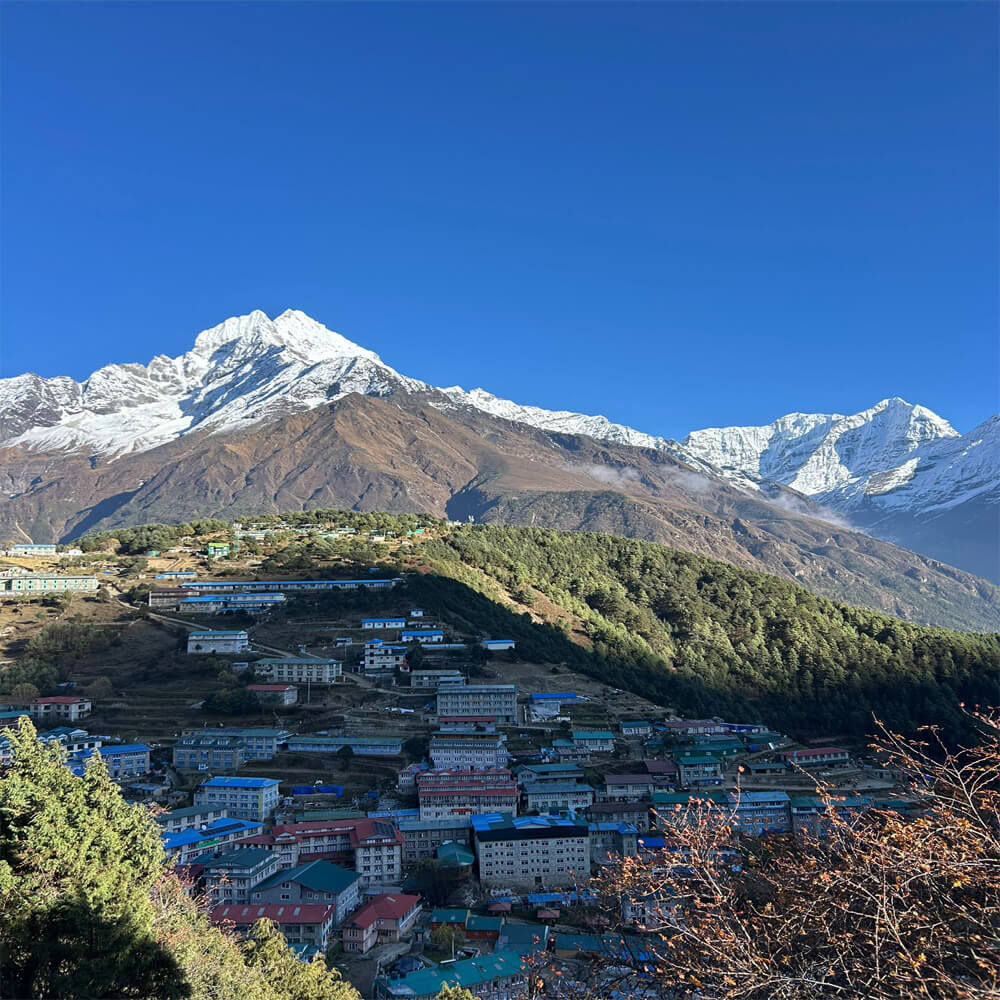
Selecting a local guide vs. international guide for Nepal treks affects the local economy as well as your experience. Local guides offer genuine insight into Sherpa culture, Buddhist traditions, and mountain ecology, while foreign guides could bring familiarity and language convenience. They are the most knowledgeable about secure teahouses, hidden routes, and local weather patterns. In addition to enhancing your trip, hiring locally guarantees that money stays in Nepalese communities, supporting the prosperity of families in isolated areas.
Responsible Trekking Practices
Responsible trekking practices mean traveling with respect for people, wildlife, and the environment. Refill bottles with boiling or filtered water to avoid single-use plastics. Reduce trash on the route, support locally owned lodges, and stay in teahouses. Select environmentally responsible organizations who adhere to the "Leave No Trace" philosophy and, if feasible, use renewable energy sources. Be respectful of the host culture by dressing modestly, honoring local traditions, and saying "namaste" to others. Every little decision helps to protect Nepal's unspoiled landscapes for coming generations.
Trekking Logistics in Nepal
Every successful trip is the result of meticulously planned trekking logistics in Nepal that operators manage with ease, including everything from lodging and transportation to permits and guides. Local businesses make sure that every part of your trip goes without a hitch by arranging for porters, meals, and emergency assistance. International operators frequently lack the local networks and first-hand knowledge necessary to handle erratic alpine conditions. You benefit from flexibility when you book locally because it is much simpler to accommodate last-minute changes, weather modifications, or cultural extensions.
Nepal Trekking Permits and Guides
Every Nepali trek needs the right paperwork, and Nepal trekking permits and guides are essential to a safe and legal trip. Whether it is a limited area authorization, Sagarmatha National Park admission, or TIMS Card, local agencies manage your permits effectively. In certain areas, hiring a certified guide is not only required, but it also guarantees safety and cultural interpretation. Their presence acts as a link between trekkers and nearby communities, fostering deep connections that elevate your journey into a more profound human encounter.
The goal of sustainable trekking is to strike a balance between appreciating the Himalayas' splendor and elevating the local population. Your trip to Nepal will be genuinely responsible and fulfilling if you select local guides, adhere to moral standards, and consider your influence.
How to Choose the Right Trekking Partner
Finding the proper individuals to walk with you is just as important as picking the route when organizing a trip in Nepal. Who plans your trip will have a big impact on your experience, whether your goal is to reach Everest Base Camp, Annapurna, or Manaslu. Here is a thorough examination of how to choose the best trekking company in Nepal and the reasons it is important for your journey and the local people you will be seeing.
Researching Nepal Trekking Agencies with Best Reviews
Research is the first step. Start by checking Nepal trekking agencies with best reviews on trusted platforms like TripAdvisor, Google, or travel blogs. Seek consistency; sincere evaluations frequently highlight the expertise of the guides, their attention to detail, and their personal touches throughout the journey. Watch out for testimonials that seem repetitious and overly polished. A reputable business should also have clear communication, a current government registration, and knowledgeable local guides who have received altitude and first-aid training.
Understanding Your Priorities and Budget
Think about what you value most before making a reservation. Is it ease, adaptability, or a strong cultural bond? Budget-conscious tourists can select locally owned lodges and tea houses, while luxury trekkers may favor businesses that offer helicopter services. The question, “Should I book my trek with a local company or international agency?” depends on your needs. While local operators offer authenticity, better price, and direct community benefit, international agencies offer convenience and pre-departure support.
Why Support Local Trekking Operators in Nepal
Selecting a Nepali operator is not only a sensible choice, but also a moral one. Your money stays in Nepal when you book directly, helping mountain communities, porters, and guides. This encourages sustainable tourism and boosts the local economy. Why support local trekking operators in Nepal? Because they are the ones who are most familiar with the people, culture, and landscape. They can effectively manage logistics, customize itineraries, and provide authentic Himalayan hospitality that big international organizations frequently forget.
Embracing Eco-Friendly Trekking in Nepal
The importance of traveling responsibly is growing. Numerous regional organizations support eco-friendly trekking in Nepal by endorsing eco-lodges that reduce environmental effect, reusable bottles, and garbage management. Inquire about the environmental policies of your trekking company. Do they dispose of waste? Do they stay away from single-use plastics? In order to preserve the mountains for future generations, a reputable organization teaches trekkers to respect local traditions, wildlife, and pathways.
Practical Tips for Choosing the Right Company
- Verify licenses from Nepal Tourism Board and Trekking Agencies’ Association of Nepal (TAAN).
- Ask for guide insurance and emergency support details.
- Compare package inclusions cheap isn’t always better.
- Ensure clear communication and fair porter treatment.
- Look for flexibility in itineraries and transparent refund policies.
- Nepal Trekking Routes:A Trusted Local Agency Example
Working with a reputable local business like Nepal Trekking Routes can make all the difference when organizing a trip in Nepal. The guides at our Kathmandu-based firm have years of expertise trekking the Himalayas and know what trekkers really need. We provide a variety of experiences, ranging from well-known routes like the Annapurna Circuit and Everest Base Camp to less-traveled routes like Manaslu and Langtang.
Nepal Trekking Routes stands out for its flexibility and personalized attention. To provide a seamless, worry-free experience, we modify itineraries to fit your interests, timetable, and level of fitness. our guides are certified experts who place a high value on sustainable travel methods, cultural immersion, and safety. Additionally, our company promotes ethical tourism that directly benefits the Himalayan region by employing local guides and porters.
Nepal Trekking Routes combines professionalism with genuine Nepali hospitality, whether you are looking for luxury, comfort, or genuine adventure. We take care of everything so you may concentrate on enjoying the trip, including permits, logistics, hotel reservations, and airport transportation. You are joining a reputable family of Himalayan adventurers when you book a trek with us, thanks to our extensive local knowledge and friendly service.
Booking Trek in Nepal FAQs
What are the main differences between local and international trekking agencies?
Local agencies are based in Nepal and offer firsthand knowledge of trails, culture, and logistics. International agencies operate from outside Nepal, often partnering with local companies, and provide pre-trip support, marketing, and insurance services.
Which option is more cost-effective?
Generally, local agencies are more affordable because there are fewer middlemen, and costs directly support local staff and communities. International agencies usually charge higher fees to cover global overheads.
Are safety and insurance better with international agencies?
Both can provide safety measures and insurance, but reputable local agencies like Nepal Trekking Routes are highly experienced in high-altitude emergencies, evacuation, and permits, ensuring safe treks comparable to international standards.
Can local agencies handle last-minute bookings?
Yes. Local operators have the flexibility and connections to arrange permits, accommodations, and guides quickly, even on short notice.
How do I choose the right agency?
Check for official registration, customer reviews, insurance coverage, and transparency in pricing. Look for agencies that prioritize safety, local employment, and eco-friendly practices, ensuring a reliable and enriching trekking experience.
Conclusion: Booking Your Trek in Nepal
The type of experience you are looking for in Nepal will ultimately determine whether you choose to work with local experts or foreign trekking organizations. Local businesses sustain the mountain towns you trek through directly and provide a more genuine, adaptable, and reasonably priced experience. For first-time travelers, however, international agencies might offer more convenience and pre-departure planning. Finding a balance between safety, comfort, and cultural ties is crucial. The heart of your journey is in the Himalayas itself, where every step serves as a reminder of why Nepal is still the best trekking destination in the world, regardless of whether you walk with a local guide who tells you mountain tales or you join a team that is well-known throughout the world.

